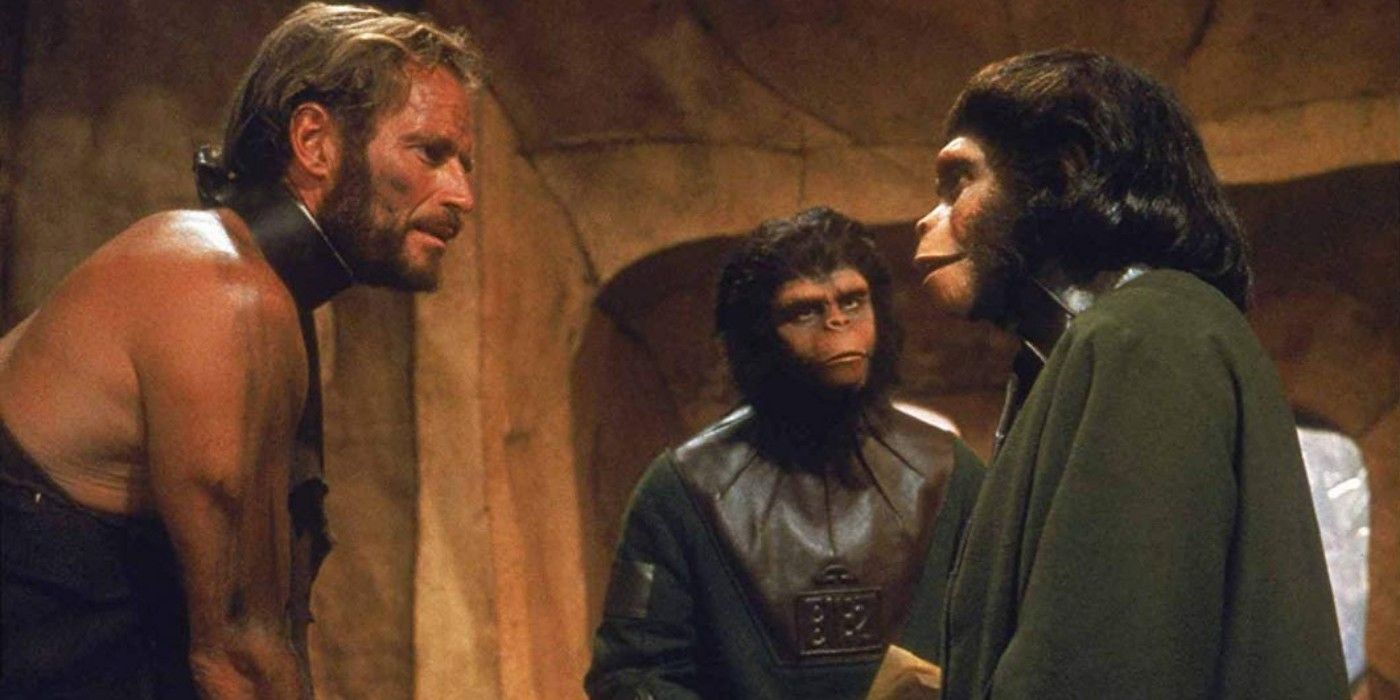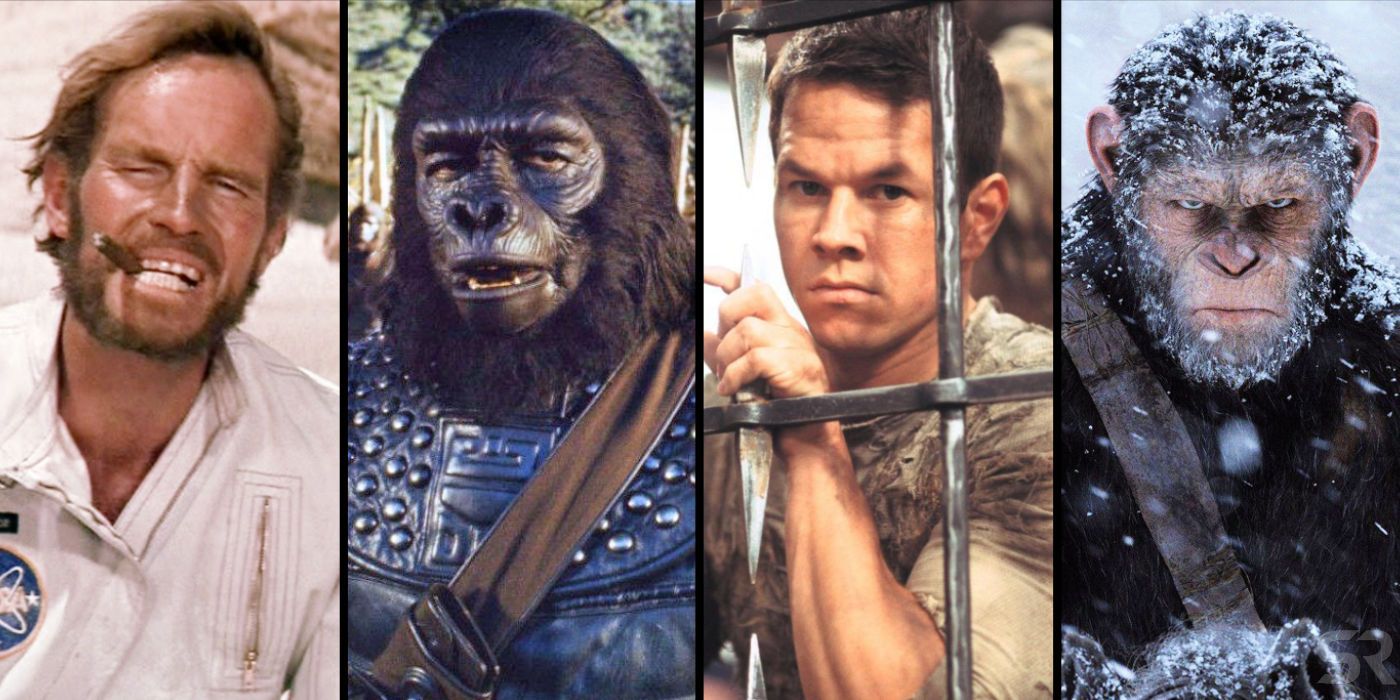So, you’ve stumbled upon the wild world of Planet of the Apes and now you’re wondering how to watch the movies in order. Let’s face it, this franchise is a rollercoaster of simian evolution, political drama, and epic storytelling. But hold your bananas, because diving into this jungle of films can get confusing real quick. Fear not, my fellow primate enthusiast, because I’m about to break it down for ya. Stick around, and you’ll leave here with a clear roadmap to navigating the Planet of the Apes universe.
Whether you’re a die-hard fan or just curious about why apes took over the world, this guide has got your back. We’ll cover everything from the original classics to the modern reboots, ensuring you’re set up for an adventure that’s both thrilling and educational. And hey, who doesn’t love a good ape uprising story?
Before we dive in, let me throw this out there: the Planet of the Apes franchise is more than just a bunch of monkeys in costumes. It’s a deep dive into themes of power, survival, and the consequences of human arrogance. So, buckle up, because we’re about to peel back the layers of this iconic series and figure out the perfect viewing order.
Read also:Danny Madterson The Untold Story Of A Rising Star
Table of Contents
- The Origin of Planet of the Apes
- Understanding the Timeline
- The Original Planet of the Apes Series
- The Modern Reboot
- Planet of the Apes in Order: How to Watch
- Key Themes and Messages
- Main Characters and Their Evolution
- Original vs. Reboot: What’s the Difference?
- The Cultural Impact of Planet of the Apes
- What’s Next for the Franchise?
The Origin of Planet of the Apes
Alright, let’s rewind the clock to the beginning of it all. The Planet of the Apes saga didn’t start with a movie—it started with a book. French author Pierre Boulle penned the novel "La Planète des Singes" back in 1963, which became the foundation for the entire franchise. The novel explored the idea of a world where apes ruled and humans were the lesser species. Sound familiar?
Now, here’s the kicker: Boulle’s novel wasn’t originally intended to be a blockbuster hit. It was more of a philosophical exploration of human nature and our place in the universe. But Hollywood saw potential, and in 1968, the first Planet of the Apes movie hit the big screen, starring Charlton Heston as astronaut George Taylor. And the rest, as they say, is history.
Why Was the Book Adapted?
Well, the book’s themes of social commentary and political critique resonated deeply with audiences during the turbulent 1960s. The civil rights movement, the Cold War, and the space race all played into the film’s success. It wasn’t just entertainment—it was a mirror reflecting society’s fears and hopes.
Understanding the Timeline
Here’s where things get a little hairy (pun intended). The Planet of the Apes franchise has multiple timelines, alternate realities, and even a time loop or two. If you’re scratching your head right now, don’t worry—it’s totally normal. Let’s break it down.
The original series follows a linear timeline, starting with the first movie and ending with the fifth. But when the reboot came around, it created a new timeline that branched off from the original. Confusing? Yes. Fascinating? Absolutely.
Key Timeline Points
- Original Timeline: Begins with "Planet of the Apes" (1968) and ends with "Battle for the Planet of the Apes" (1973).
- Reboot Timeline: Starts with "Rise of the Planet of the Apes" (2011) and continues through "War for the Planet of the Apes" (2017).
- Crossover: Some fans speculate that the timelines might eventually converge, but for now, they remain separate.
The Original Planet of the Apes Series
Let’s take a trip back to the ’60s and ’70s, where it all began. The original Planet of the Apes series consisted of five films, each building on the last to create a complex narrative. These movies weren’t just about apes taking over—they were packed with social commentary and thought-provoking storylines.
Read also:Joe Jonas And Camilla Belle A Love Story That Captured Hearts
Here’s a Quick Breakdown of the Original Series:
- Planet of the Apes (1968): Astronauts land on a mysterious planet where apes are the dominant species.
- Beneath the Planet of the Apes (1970): Follows a sequel to the first film, introducing a hidden society of mutants.
- Escape from the Planet of the Apes (1971): Time travel enters the mix as apes travel back to Earth.
- Conquest of the Planet of the Apes (1972): A dystopian future where apes rise up against their human oppressors.
- Battle for the Planet of the Apes (1973): The final chapter, focusing on the struggle for peace between humans and apes.
Each film added layers to the story, exploring themes like power dynamics, prejudice, and the consequences of our actions. It’s no wonder this series became a cultural phenomenon.
The Modern Reboot
Fast forward to the 21st century, and we get the modern reboot of Planet of the Apes. Directed by talents like Rupert Wyatt and Matt Reeves, this trilogy brought the story into a new era with cutting-edge special effects and deeper character development.
Meet the Key Players:
- Rise of the Planet of the Apes (2011): Introduces Caesar, a genetically enhanced chimpanzee who leads the ape revolution.
- Dawn of the Planet of the Apes (2014): Explores the fragile peace between humans and apes after the initial uprising.
- War for the Planet of the Apes (2017): The epic conclusion, focusing on the final battle between the apes and the remnants of humanity.
What sets the reboot apart is its focus on character-driven storytelling. Andy Serkis’ portrayal of Caesar is nothing short of legendary, bringing depth and emotion to a character that could have easily been dismissed as just another CGI creation.
Planet of the Apes in Order: How to Watch
Now, here’s the million-dollar question: What’s the best way to watch Planet of the Apes in order? Well, it depends on what you’re looking for. If you want to experience the original vision, start with the classic series. If you’re into modern storytelling, dive into the reboot. But if you’re a completist, here’s the ultimate viewing order:
Ultimate Viewing Order:
- Planet of the Apes (1968)
- Beneath the Planet of the Apes (1970)
- Escape from the Planet of the Apes (1971)
- Conquest of the Planet of the Apes (1972)
- Battle for the Planet of the Apes (1973)
- Rise of the Planet of the Apes (2011)
- Dawn of the Planet of the Apes (2014)
- War for the Planet of the Apes (2017)
Trust me, this order will give you the full experience, from the gritty origins to the epic conclusion.
Key Themes and Messages
At its core, Planet of the Apes is more than just a story about monkeys in charge. It’s a powerful commentary on human nature, societal structures, and the dangers of unchecked ambition. Here are some key themes that run throughout the franchise:
- Power and Oppression: Both the original and reboot series explore the cycle of oppression and how it leads to conflict.
- Survival and Adaptation: The apes’ journey from captivity to dominance is a testament to their resilience and intelligence.
- Environmental Warning: The films often warn against the destruction of the planet and the consequences of human greed.
These themes are what make Planet of the Apes resonate with audiences across generations.
Main Characters and Their Evolution
No franchise would be complete without its iconic characters. From Charlton Heston’s George Taylor to Andy Serkis’ Caesar, these characters have left a lasting impact on pop culture.
Who Are the Key Characters?
- George Taylor: The original astronaut who discovers the shocking truth about the planet.
- Caesar: The genetically enhanced ape who becomes the leader of his kind.
- Dr. Zaius: The orangutan minister who embodies the complexities of ape society.
- Koba: Caesar’s rival in the reboot, representing the darker side of ape nature.
Each character adds depth to the story, making the franchise more than just a series of action-packed movies.
Original vs. Reboot: What’s the Difference?
Let’s talk about the elephant—or should I say ape—in the room. How do the original and reboot series compare? While both share the same core themes, they differ in execution and tone.
Key Differences:
- Tone: The original series had a more campy, science fiction vibe, while the reboot leans into a darker, more grounded reality.
- Technology: The reboot benefits from modern special effects, making the apes feel more realistic and relatable.
- Character Focus: The reboot places a stronger emphasis on character development, particularly with Caesar.
Ultimately, both versions have their own strengths and appeal to different audiences.
The Cultural Impact of Planet of the Apes
It’s impossible to talk about Planet of the Apes without acknowledging its cultural significance. From influencing countless films and TV shows to sparking debates about humanity’s role in the world, this franchise has left an indelible mark on our collective consciousness.
Even today, the ape uprising continues to inspire new generations of filmmakers and storytellers. It’s a testament to the power of storytelling and the enduring appeal of a good monkey revolution.
What’s Next for the Franchise?
As of now, the future of Planet of the Apes is uncertain. While there have been rumors of a new installment, nothing has been officially announced. But one thing’s for sure: the franchise isn’t going anywhere anytime soon.
With its rich history and deep themes, Planet of the Apes will continue to captivate audiences for years to come. Whether it’s through new movies, TV series, or even video games, the ape saga is far from over.
Conclusion
So, there you have it—your ultimate guide to Planet of the Apes in order. Whether you’re a fan of the original series or the modern reboot, this franchise has something for everyone. From its thought-provoking themes to its unforgettable characters, Planet of the Apes remains


